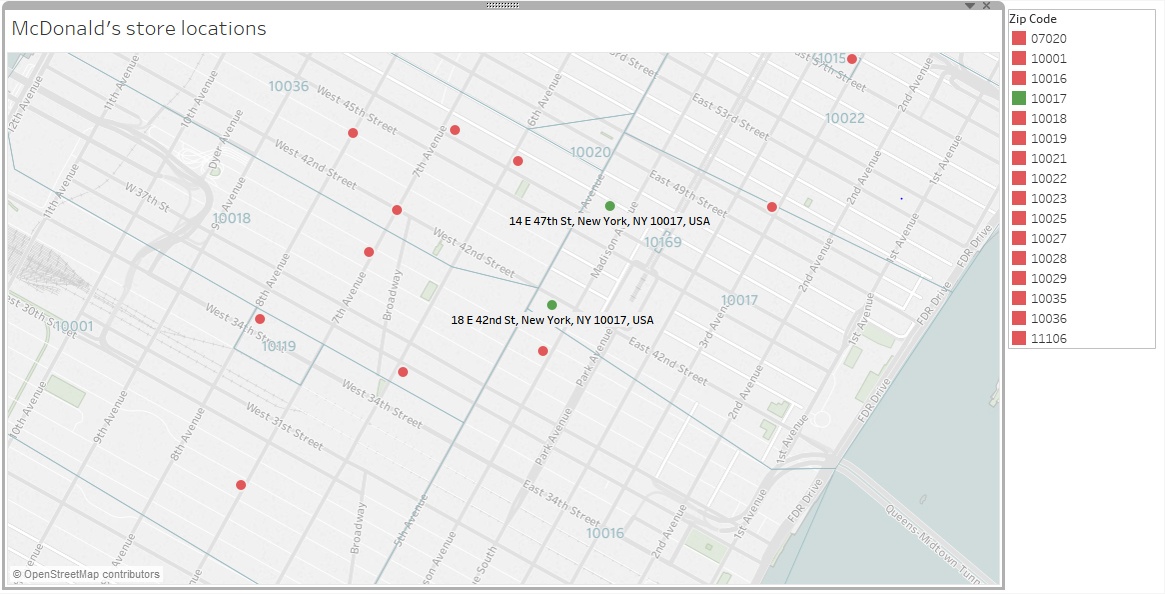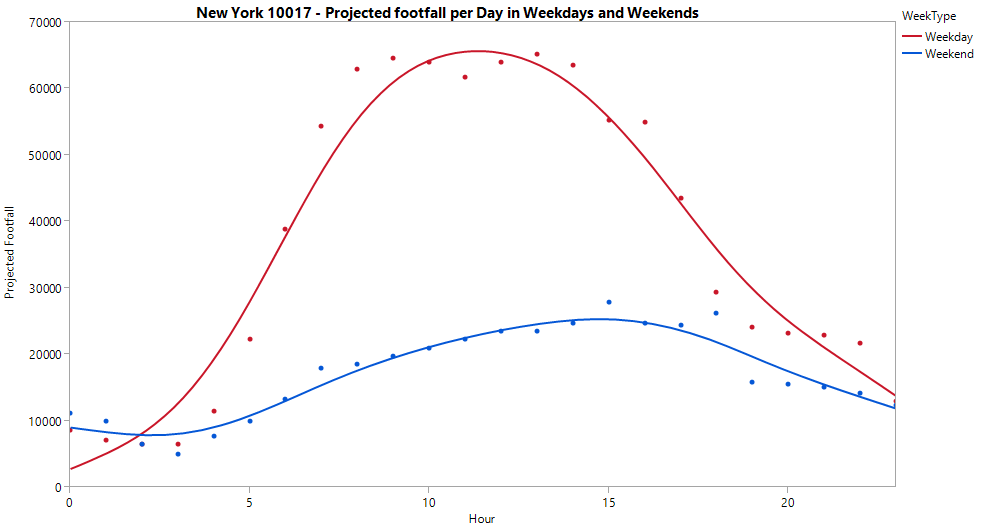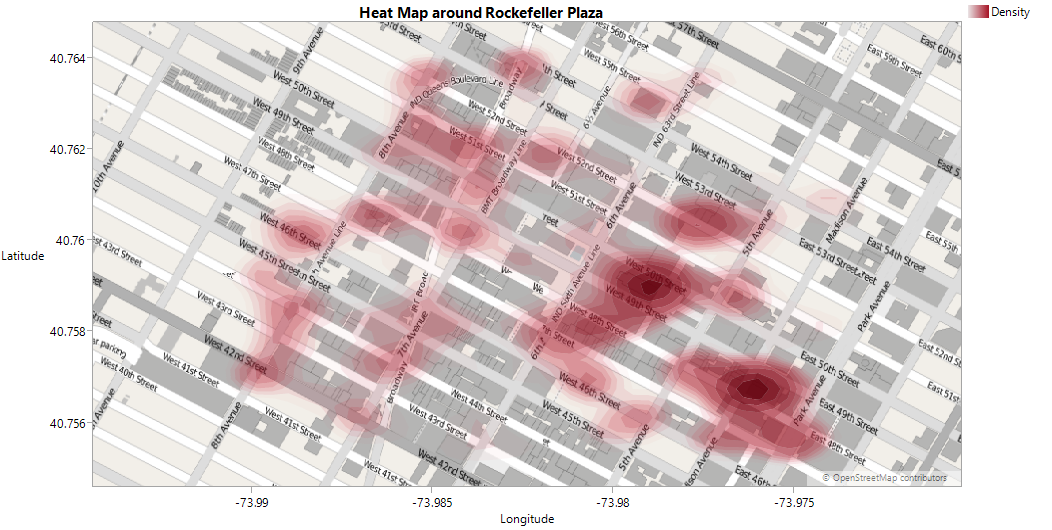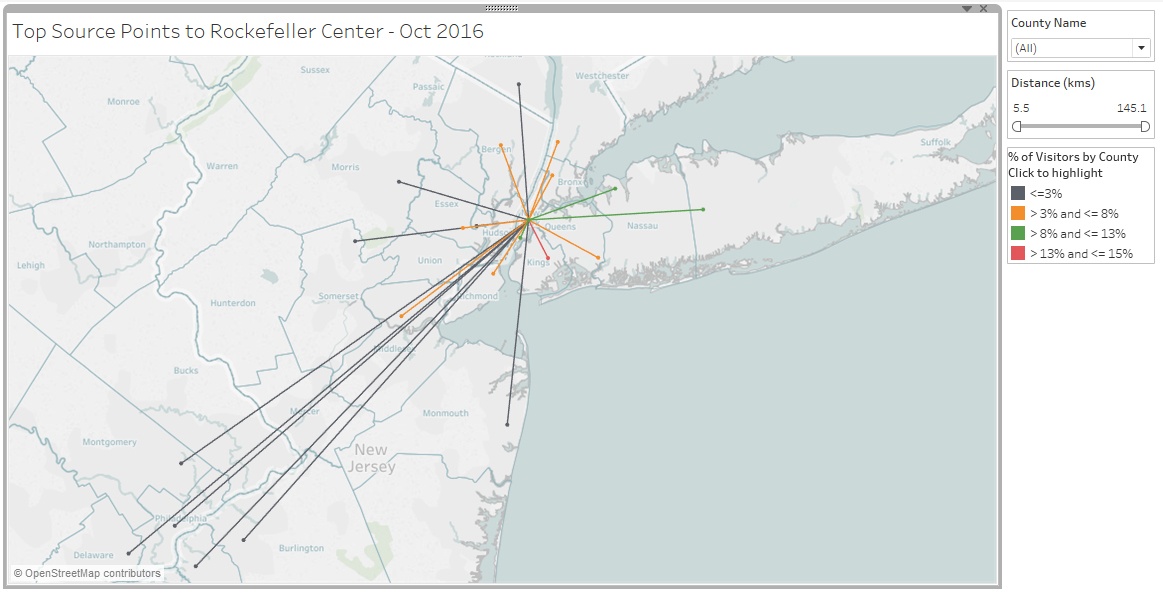Just how do major retailers use mobility data to stay competitive in this fast paced industry? Read on and adopt these methods for your retail store today.
Mobility data refers to the trajectories or locations of people and objects. In the retail industry, the movement of shoppers and prospective customers are of particular interest. This is commonly referred to as footfall, which involves measuring the number of people in and around a store or area within a period of time.
With footfall data, you can determine other key metrics that are crucial for survival in today’s retail climate such as shopper traffic, estimated conversion rates and estimated transaction values.
Why is mobility data important?
Calculating footfall in and around your store helps managers make business decisions such as how to optimize marketing strategies, when to launch promotions or where to allocate labor. With footfall data, managers can identify, at any time of the day, how many purchasing opportunities they have in each store – and how many they are missing.
Knowing your weekly, daily and hourly retail footfall can give you the extra edge you need to boost sales productivity, increase conversions and make instant operational changes in real-time.
Growing your retail business with mobility data
Here are three examples of how retailers can use mobility data to grow their business and increase competitiveness. In each example, anonymized mobility data around Rockefeller Center, New York, between 1 October 2016 and 31 October 2016 was used. The data was downloaded from DataStreamX.
1. Optimize staffing
Retailers face a host of challenges when it comes to staffing. In a fast paced industry, seasonal, monthly or even daily fluctuations in shopper traffic can be a headache for managers in charge of staffing. Too many employees drive up overhead and directly affect profitability, while too few employees limit the ability to provide adequate customer service.
In this example, we take a look at footfall data around two McDonald's stores near Rockefeller Center, represented by green points in the figure below.

A common challenge that managers at these stores may face is the optimum allocation of staff. Should more staff be allocated to work on weekdays or on weekends? This question can be easily answered by looking at footfall data around these stores.
The figure below shows the projected footfall per day on weekdays and weekends at these stores.

We see that the projected footfall per day on weekdays (red plot) is 117 percent higher than the same on weekends (blue plot). In addition, the projected footfall on weekdays constitutes 84 percent of the total footfall in a week.
Based on this information, staffing at these McDonald's stores around Rockefeller Center can be optimized such that more staff can be allocated on weekdays and less on weekends in order to reduce labor costs and improve customer service. With footfall data, retailers are able to predict the number of shoppers around the area at any given time and optimize labor distribution accordingly.
2. Location-based online advertising
Retailers have relied on traditional marketing methods such as print advertisements, billboards and flyers for years to grow their business. While these methods may still work today, innovative companies have used new marketing tactics such as online advertising to complement traditional marketing methods with much success.
Location-based online advertising is a form of advertising that integrates mobile advertising with location-based devices. Geolocation allows retailers to provide location-specific advertisements on mobile devices in real-time. Although this form of advertising is relatively cheap, the distribution of prospective customers in the target area must first be known in order to optimize the campaign.
In this example, we consider footfall data around Banana Republic’s outlet located at Rockefeller Center. The density heat map below shows the distribution of visitors around the area.

Based on the density heat map, we are able to identify two locations with a high distribution of prospective customers – at Rockefeller Center and at 415 Madison Avenue.
Knowing that these two areas have the highest density of footfall around the area, marketing managers at Banana Republic can perform an optimized location-based online advertising campaign targeting prospective customers in these two areas to encourage them to visit the outlet at Rockefeller Center. By leveraging on mobility data, managers can increase conversion rates and return on investment of online advertising campaigns.
3. Location-based offline advertising
Besides increasing conversion rates of online advertising campaigns, mobility data can also help retailers optimize their offline advertising campaigns. Traditionally, retailers have relied on offline advertising methods such as print and outdoor advertising to capture the attention of prospective customers. However, many retailers have struggled to use these methods effectively as they require advertising in the right location, to the right audience, and with the right message. Combined with demographic data, footfall data can be a powerful tool to determine these factors so as to ensure the success of offline advertising campaigns. In this example, we consider how footfall and demographic data can be used to carry out a location-based offline advertising campaign to increase the number of customers at KFC’s outlet located 300 meters away from Rockefeller Center.
From the previous example, we know from footfall data that Rockefeller Center has the highest shopper traffic.
By looking at the accompanying demographic data, we find that the majority of prospective customers around Rockefeller Center between 11 am and 2 pm are from the following counties: Kings County (15 percent, red), Suffolk County (11 percent, green), and Nassau County (9 percent, orange) as illustrated in the figure below.

With this information, marketing managers at KFC can execute a targeted offline advertising campaign in these counties with fliers or coupons offering promotions at the Rockefeller Center outlet to attract prospective customers in these counties. By carrying out a highly targeted advertising campaign, managers will not only be able to increase conversion rates at their stores but also lower the cost of the campaigns.
How to source mobility data?
Obtaining mobility data for use in decision-making may be a difficult task for the uninitiated. Variables such as the time of day, seasonality and local trends make footfall data nearly impossible to measure accurately by manual counting or sampling. These factors also affect the reliability of conclusions based on footfall data alone. As a result, footfall data is often used in conjunction with other types of data such as demographic data, allowing retailers to formulate and test their hypotheses.
Accurate and reliable footfall and demographic data can be obtained from mobile app companies who provide anonymized location data at a small fee. If it is your first time purchasing data, consider using online marketplaces such as DataStreamX to help you get in touch with suppliers of data easily.
Summary
We’ve seen how mobility data helps managers make better business decisions on issues such as staffing and labor distribution. In addition, not only do retailers know where their customers are, they can communicate with them at the precise moment with the most relevant offer. If you are considering getting hold of mobility data to help you make better decisions at your retail store, contact marketplaces such as DataStreamX to help you connect with suppliers of mobility data quickly and easily.


